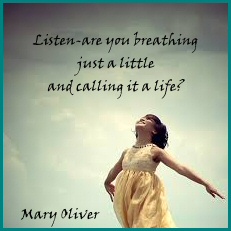can the enneagram make you a better writer?
 At a SouthWest Writers meeting several years ago, a fiction writer at my table mentioned she didn’t always know what choice her character would make when faced with a decision, an obstacle, or a fork in the road. I had no opportunity to pursue the conversation with her, but I wanted to tell her about the Enneagram and how it could help her solve that problem.
At a SouthWest Writers meeting several years ago, a fiction writer at my table mentioned she didn’t always know what choice her character would make when faced with a decision, an obstacle, or a fork in the road. I had no opportunity to pursue the conversation with her, but I wanted to tell her about the Enneagram and how it could help her solve that problem.
I admire her for being honest about an issue many writers struggle with. Anyone who writes character-driven stories, real or fictional, must have a basic understanding of human nature. While some aspects of being human are common to all of us, we do differ from each other, sometimes in significant ways. The ways we’re different aren’t random, however. A writer can’t just throw together a hodgepodge of attitudes, behaviors, and characteristics and hope to come up with a believable character. Discerning readers recognize poorly drawn characters, whether they are two-dimensional or too multi-dimensional.
Our characters don’t just have to be believable to our readers; they also have to be believable to us. We have to know them better than they know themselves. Yes, we need to understand what they want and what’s in their way, but we also need to know what they’re afraid of, what they resist, what their unconscious motivations are, and what internal obstacles they must overcome in order to succeed. Having a good personality typing system to work with can make that so much easier. It can also help your characters stay on track instead of swerving off the rails.
cookie-cutter characters need not apply
 The primary objections writers have to typing their characters are no different from the objections many non-writers have to being typed.
The primary objections writers have to typing their characters are no different from the objections many non-writers have to being typed.
Don’t box me in. Some people believe they’re unique, so being typed diminishes them somehow. They think typing puts them into a box. But typing doesn’t put people into boxes; it identifies aspects of the boxes they’re already in. It points out what’s inside the box and what’s outside, both of which are equally important.
Typing equals stereotyping. That’s true. But stereotyping is just a form of categorizing, and categorizing is a function of the kind of thinking the unconscious part of the brain does automatically. We can’t stop the brain from categorizing, which means we’re already stereotyping other people. Understanding the elements of personality can result in informed rather than uninformed categorizing by the brain.
There’s more to me (or my character) than my type. It’s true that personality type doesn’t explain everything, but that’s not a good reason to dismiss it. Humans have a capacity, called mentalization, that allows us to understand our own mental states or thought processes and—more importantly for writers—to attribute mental states to others. We can recognize that others have beliefs, intentions, fears, and desires that are different from ours. Without this ability, we wouldn’t be able to get inside the heads of our characters. The better we’re able to understand where other people (real or imaginary) are coming from, the more true-to-life our characters will be.
why choose the enneagram?
The Enneagram isn’t the only personality typing system available. What I like about it is that the surface simplicity makes the basic concepts easy to grasp. But it is also comprehensive and multifaceted, both broad and deep, which allows for plenty of subtleties and variations.
Enneagram is a Greek word that means “diagram of nine.” The symbol consists of a triangle and a hexad within a circle. The resulting nine points represent nine basic, or core, personality types, each of which has a unique perspective and approach to life. The theory of the Enneagram is that we tend to polarize at one of the nine points, overdeveloping the characteristics associated with that point, while leaving undeveloped many of the characteristics associated with the other points. So each type also represents a particular kind of imbalance.
An individual’s core personality type remains the same over the course of a lifetime, which is why having a character change too much or too abruptly, or behave totally “out of character,” usually isn’t believable. But every character has the possibility for change, either positive (growth) or negative (deterioration). Any character can learn how to moderate and overcome his or her innate predispositions or be done in by them. In fact, that’s the basic arc of just about any character-driven story.
the nine types
Very briefly, these are the nine types:
- The Good Person, the Achiever, the Reformer, the Perfectionist. Principled and responsible, but can also be rule-bound and critical.
- The Helper, the Giver, the People Pleaser, the Partner. Compassionate and altruistic, but can also be co-dependent and manipulative.
- The Performer, the Succeeder, the Motivator, and the Status Seeker. Self-assured and accomplished, but can also be competitive and performance-driven.
- The Individualist, the Tragic Romantic, the Artist, the Sensitive Person. Creative and inspiring, but can also be overly dramatic and fault-finding.
- The Observer, the Investigator, the Knowledge-Seeker, the Thinker. Perceptive and curious, but can also be cold and detached.
- The Loyalist, the Questioner, the Guardian, the Devil’s Advocate. Organized and hard-working, but can also be indecisive and overly-vigilant.
- The Adventurer, the Epicure, the Generalist, the Enthusiast. Cheerful and multi-talented, but can also be acquisitive and thrill-seeking.
- The Challenger, the Confronter, the Leader, the Asserter. Courageous and magnanimous, but can also be combative and domineering.
- The Peacemaker, the Preservationist, the Mediator, the Universalist. Deeply receptive and serene, but can also be disengaged and inattentive.
You can probably identify a few people—real or fictional—who might fit some of these descriptions.
getting under your characters’ skin
 One of the benefits of learning how to apply the Enneagram in your writing is the ability it gives you to get under your characters’ skin so you can know them better than they know themselves. While many personality characteristics are apparent—meaning they’re expressed externally—the motivation underlying them is internal and unconscious. Your characters, like actual people, think they know why they behave as they do, but there’s a good chance they’re wrong.
One of the benefits of learning how to apply the Enneagram in your writing is the ability it gives you to get under your characters’ skin so you can know them better than they know themselves. While many personality characteristics are apparent—meaning they’re expressed externally—the motivation underlying them is internal and unconscious. Your characters, like actual people, think they know why they behave as they do, but there’s a good chance they’re wrong.
The following sketches of the nine Enneagram types may give you some ideas in regard to your own characters (the ones in your imagination as well as the ones you interact with in the so-called real world).
Type 1: the Good Person, the Achiever, the Reformer, the Perfectionist
Keyword: Principle. Ones are motivated to improve themselves and live the right way. They follow the rules, defend against criticism from the environment, and scan the environment for chaos or disorder to right. Sometimes they resent the fact that others seem to do as they please. Downside: They can come across as rigid, rule-bound, critical, and self-righteous. Upside: They can be highly principled and responsible with a strong sense of integrity and an ability to inspire others. Communication Style: Teaching, preaching, finding fault, admonishing. Self-talk: That’s not right. Fictional Example: Atticus Finch (To Kill a Mockingbird)
Type 2: the Helper, the Giver, the People Pleaser, the Partner
Keyword: Persuasion. Twos are motivated by the need to be loved and valued and to express their positive feelings toward others. They scan the environment to see what needs to be done, keeping their own needs out of their awareness by focusing on the needs of others. Downside: They can be co-dependent, manipulative martyrs. Upside: They can be sincere, empathetic, compassionate, altruistic people who make a positive difference in others’ lives. Communication Style: Befriending, supporting, offering advice, getting personal. Self-talk: You need me. Fictional Example: Garp (The World According to Garp)
Type 3: the Performer, the Succeeder, the Motivator, the Status Seeker
Keyword: Performance. Threes scan the environment for approval and resist being undermined by the environment. Wanting to be well regarded, successful, productive, and efficient, they focus more on their outer appearance than on the way they feel. Downside: They can be competitive and overly concerned with performance. Upside: They can be charming, self-assured, high-spirited, and persistent, making outstanding contributions and achievements. Communication Style: Promoting, exclaiming, motivational speeches, success stories. Self-talk: Watch me shine. Fictional Example: Jay Gatsby (The Great Gatsby)
Type 4: the Individualist, the Tragic Romantic, the Artist, the Sensitive Person
Keyword: Passion. Fours scan the environment for raw material and defend against being pigeonholed or limited by the environment. They search for what life means and try to understand their feelings and to avoid being ordinary. Downside: Since they compare reality with what could be, they find fault with who they are and what they have. Upside: They can be highly creative and inspiring and have the ability to transform all their experiences into something valuable. Communication Style: Longing, lamenting, poetic turns of phrase, self-expression. Self-talk: I’m feeling…. Fictional Example: Blanche DuBois (A Streetcar Named Desire)
Type 5: the Observer, the Investigator, the Knowledge-Seeker, the Thinker
Keyword: Privacy. Fives scan the environment for information and defend against intrusion from the environment. They want to be self-sufficient, to know and understand, and to avoid feeling invaded; they enjoy being alone with their own thoughts. Downside: They can seem cold and detached, preferring their own minds to the company of others. Upside: They can be highly perceptive, insightful, curious, mentally alert, and open-minded. Communication Style: Detailed explanations, facts, precise instructions, definitions. Self-talk: I’m thinking…. Fictional Example: Sherlock Holmes
Type 6: the Loyalist, the Questioner, the Guardian, the Devil’s Advocate
Keyword: Participation. Sixes scan the environment for agreement and support, defending against instability in the environment. They tend to be cautious, compliant, and dependent, but they can also be indecisive and overly vigilant. Upside: They can be great community builders, who are responsible, organized, and hardworking. Communication Style: Questioning, second-guessing, trouble-shooting, warning. Self-talk: But what if…. Fictional Example: Hamlet
Type 7: the Adventurer, the Epicure, the Generalist, the Enthusiast
Keyword: Pleasure. Sevens scan the environment for gratification, resisting frustration from it. They want to be happy, to contribute to the world, and to avoid pain and suffering. They suppress anxiety by making lots of plans and keeping busy. Downside: They can become acquisitive and materialistic, focused on avoiding boredom and amusing themselves. Upside: They can be resilient and cheerful, multitalented, accomplished achievers who bring people together. Communication Style: Storytelling, joking, entertaining, imagining. Self-talk: On a lighter note…. Fictional Example: Holly Golightly (Breakfast at Tiffany’s)
Type 8: the Challenger, the Confronter, the Leader, the Asserter
Keyword: Power. Eights scan the environment to see where the power lies and resist impact from the environment. They want to be self-reliant and strong and to have an impact on the world. They readily express their anger. Downside: They can be combative and adversarial, attempting to dominate their environment. Upside: They can be courageous and magnanimous, natural leaders who champion people and focus on achieving their vision. Communication Style: Debating, arguing, giving directions, taking aim. Self-talk: Do this my way. Fictional Example: Jo March (Little Women).
Type 9: the Peacemaker, the Preservationist, the Mediator, the Universalist
Keyword: Peace. Nines scan the environment for union or merger, defending against conflict or disharmony. They are the type most likely to identify with the other types. They blend in, accommodate others, and forget their own wants and needs. Downside: They can become disengaged, unreflective, and inattentive, expressing their anger indirectly. Upside: They can be deeply receptive and trusting, stable and serene, and excellent mediators and communicators. Communication Style: Recounting sagas and epics, generalizing, daydreaming aloud, wondering. Self-talk: Nice ‘n’ easy. Fictional Example: Chauncey Gardner (Being There)
enneagram characters…in character
 Using a personality typing system the wrong way can lead to creating stereotypical or cardboard characters.
Using a personality typing system the wrong way can lead to creating stereotypical or cardboard characters.
But stereotyping results from generalizing based on a few personal characteristics of any sort, including nationality, religion, gender, race, height or weight, occupation, hobby, pet ownership, age, relationship status, or even eye or hair color.
It’s easy to turn a single (relationship status), 60-year-old (age) woman (gender) who knits (hobby) and owns a cat (pet) into a stereotype. You can probably picture her. Maybe you know someone just like her—or think you do.
Using her as a stock character is economical because the author doesn’t need to provide much additional information for readers to fill in the gaps. If this character is to play a more significant role, however, she can’t remain a stereotype. Let’s try looking at our single, 60-year-old female cat-owning knitter through the lens of the nine types of the Enneagram.
Type 1: The Critical Knitter: Fran is an intake coordinator at the local animal shelter. She always follows the policies and procedures, which is not the case for her co-workers whose mistakes she has to correct. She believes she is more qualified than her supervisor. Her tight-lipped attempts to remain composed and professional instead of telling everyone what she thinks are exhausting. In the evening, she attacks her knitting furiously, often tearing out several rows at a time because the work doesn’t meet her standard of perfection.
Type 2: The Self-Sacrificing Knitter: Marcia knits blankets, scarves, and sweaters for her siblings’ grandchildren, from whom she rarely receives a thank-you note or phone call. Even her nieces and nephews are much less grateful than they used to be. She wonders if they use the things she sends them, but it wouldn’t feel right to stop making them. So although she’d rather spend some of her knitting time reading or going out, she stays home to knit and to make sure her aging cat is comfortable.
Type 3: The Competitive Knitter: Lisa began making her own clothes in order to develop a distinctive personal style. She turned her clothing designs into a successful business which she’s currently still running. She recently took up knitting as a way to relax while being productive. But when she found out the largest yarn store in town awards prizes at an annual contest, she committed herself to besting the previous winner. Her cat is now banished to the bedroom so he won’t mess with the yarn.
Type 4: The Expressive Knitter: Olivia enjoys the various textures and colors of yarn and likes to make one-of-a-kind pieces that represent things like openness, love, or loneliness. She incorporates found objects into each one to give them added dimension. However, she tends not to follow patterns so her creations don’t always turn out the way she envisions them. That can be wonderful or utterly devastating, depending on the results. On the days she’s tempted to toss all of it into the trash, she’s sure her cat is judging her.
Type 5: The Speculative Knitter: Erin taught herself how to knit when she was 10-years-old. Having mastered the technique, she doesn’t have to think about it while she’s doing it. Instead, she uses her knitting time to ponder how to solve the world’s—and her own—problems. She enjoys thinking about things much more than she enjoys spending time with others, including her boyfriend who has become increasingly demanding of her attention. Her cat, on the other hand, has become more withdrawn. When did she last see him?
Type 6: The Anxious Knitter: Sandra has a long bus commute to work five days a week. She tried reading to pass the time but was so distracted by the scenery, overheard conversations, and passengers getting on and off that she lost track of the stories. Knitting absorbs less of her attention yet it keeps her hands occupied. That helps calm her, but it also allows her mind to ruminate about the upcoming company merger, the health of her 16-year-old cat, and the next-door neighbor she’s sure is dealing drugs.
Type 7: The Enthusiastic Knitter: Amy just learned how to knit! She loves it! In fact she’s told all her friends about it and has started a knitting circle. She carries her knitting bag everywhere so she can continue working on one of her projects. Switching back and forth keeps her from getting bored like she did with watercolor painting and photography. Last week, she had to have her cat put to sleep, but she plans to get another one at the animal shelter on Saturday.
Type 8: The Driven Knitter: Carla has a demanding job and volunteers at a women’s shelter. Recently, she agreed to help her neighbor with the crafts festival at her son’s school. She has little down time, so she took up knitting to relax. That backfired, though, because now she’s running a group that knits hats and scarves for women at the shelter. She’d like to get more exercise and eat healthier, but who has time? At least she takes excellent care of her cat.
Type 9: The Avoidant Knitter: Justine works in a large office. For some reason, everyone comes to her with their problems. Sometimes she’s able to help, but it’s very distressing to have to listen to them. She’d rather not get involved. Hoping to be left alone during her breaks, she started bringing her knitting to work and made a sign to hang on the wall of her cubicle. It says “Knitting in Progress” and has a picture of her cat so people will know not to be offended.
The brief sketches of these nine different knitters indicate some of the strengths and weaknesses—and opportunities for conflict—inherent within each type. The Enneagram also identifies how they are likely to act and react, their deepest fears, and the challenges they need to overcome. This information can help writers create characters that are both interesting and believable.
~
NOTE: This post was originally published as a series of articles in the SouthWest Sage, the newsletter of SouthWest Writers.
For more information on the Ennegram, please visit my Enneagram website, Nine Paths.

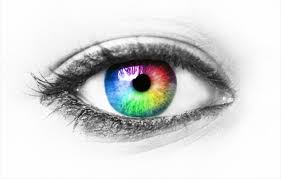 The human brain processes around 11,000,000 bits of information at a time,
The human brain processes around 11,000,000 bits of information at a time,

 I love to look at all the trees and the wildflowers in this area, along with the roadrunners and occasional coyote. The cottonwood trees along the Rio Grande bosque turn into a magnificent golden canopy in the fall. And the
I love to look at all the trees and the wildflowers in this area, along with the roadrunners and occasional coyote. The cottonwood trees along the Rio Grande bosque turn into a magnificent golden canopy in the fall. And the 
 Although you can get creative with color if you like, most zentangle art is done in black and white. Using different width pens, soft pencils, and the tortillon for shading gives a three-dimensional appearance while allowing you to focus on the patterns. I have a few colored pens, but so far I’ve only used the black ones.
Although you can get creative with color if you like, most zentangle art is done in black and white. Using different width pens, soft pencils, and the tortillon for shading gives a three-dimensional appearance while allowing you to focus on the patterns. I have a few colored pens, but so far I’ve only used the black ones. The “tangle” in zentangle is the free-form outline you begin with. In the example above you can see the rectangular outline and the strong lines running through it. The design is created by filling in the open spaces.
The “tangle” in zentangle is the free-form outline you begin with. In the example above you can see the rectangular outline and the strong lines running through it. The design is created by filling in the open spaces.
 Although I had easy access to many hiking areas including Mt. Tamalpais, Muir Woods, and the Marin Municipal Water District, Bear Valley trailhead in Pt. Reyes was my favorite. Just as Pino Trail at Elena Gallegos Park in Albuquerque is my current go-to trail, my go-to trail in Pt. Reyes was a loop that included Bear Valley trail to Old Pine to Sky to Mount Wittenberg and back to Bear Valley.
Although I had easy access to many hiking areas including Mt. Tamalpais, Muir Woods, and the Marin Municipal Water District, Bear Valley trailhead in Pt. Reyes was my favorite. Just as Pino Trail at Elena Gallegos Park in Albuquerque is my current go-to trail, my go-to trail in Pt. Reyes was a loop that included Bear Valley trail to Old Pine to Sky to Mount Wittenberg and back to Bear Valley. There’s an area along Sky trail that steadily inclines as you get closer to Mount Wittenberg. The path is gravelly and out in the open. The best time to hike here is in the spring, because just at the point when the thought might cross your mind that this is not so much fun, you turn a corner and are faced with a brilliant display of bright orange poppies against the side of a hill that is guaranteed to stop you in your tracks to celebrate the moment and the fact that you’re alive.
There’s an area along Sky trail that steadily inclines as you get closer to Mount Wittenberg. The path is gravelly and out in the open. The best time to hike here is in the spring, because just at the point when the thought might cross your mind that this is not so much fun, you turn a corner and are faced with a brilliant display of bright orange poppies against the side of a hill that is guaranteed to stop you in your tracks to celebrate the moment and the fact that you’re alive. I haven’t been back to Pt. Reyes in almost six years, but the place always feels like home to me. I’ve hiked there alone, with groups, with various friends, and most often with my partner, who died 10 years ago. He was much more of an outdoor person than I was when I met him shortly after I moved to California from the flat land of eastern Michigan. I can still remember purchasing my first pair of hiking boots. They cost about $35, which seemed like a lot of money in 1975, but I didn’t have to replace those boots until I moved to New Mexico.
I haven’t been back to Pt. Reyes in almost six years, but the place always feels like home to me. I’ve hiked there alone, with groups, with various friends, and most often with my partner, who died 10 years ago. He was much more of an outdoor person than I was when I met him shortly after I moved to California from the flat land of eastern Michigan. I can still remember purchasing my first pair of hiking boots. They cost about $35, which seemed like a lot of money in 1975, but I didn’t have to replace those boots until I moved to New Mexico.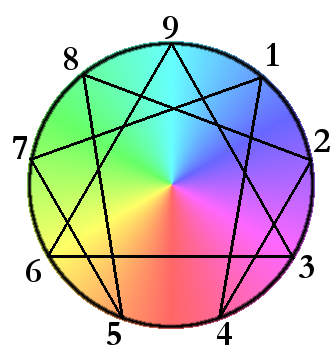
 A friend and I had lunch at the
A friend and I had lunch at the  Among the tastes I appreciate the most are very dark chocolate, dark roast coffee, strawberries, the occasional fresh baked scone, pink grapefruit juice, Campari, Campari and grapefruit juice, good (or even just decent) red wine, fresh basil, rosemary, blackberries picked from the bush, green chile, and the vinaigrette dressing I make with basil olive oil, grapefruit white balsamic vinegar and Dijon mustard.
Among the tastes I appreciate the most are very dark chocolate, dark roast coffee, strawberries, the occasional fresh baked scone, pink grapefruit juice, Campari, Campari and grapefruit juice, good (or even just decent) red wine, fresh basil, rosemary, blackberries picked from the bush, green chile, and the vinaigrette dressing I make with basil olive oil, grapefruit white balsamic vinegar and Dijon mustard. A suncatcher by any other name would be a sunflake.
A suncatcher by any other name would be a sunflake.
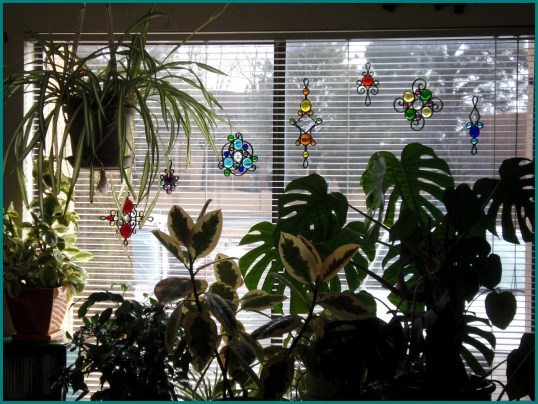
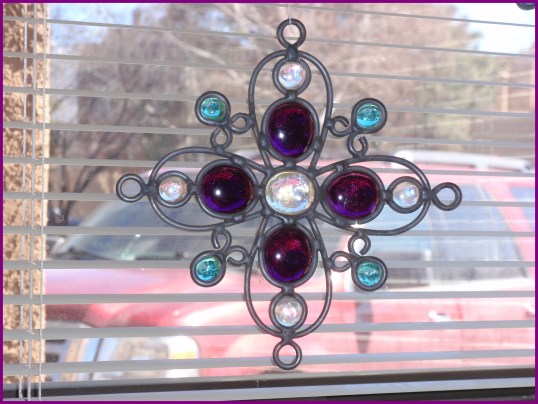
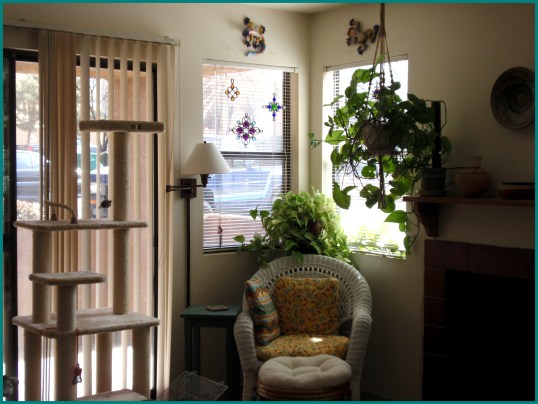
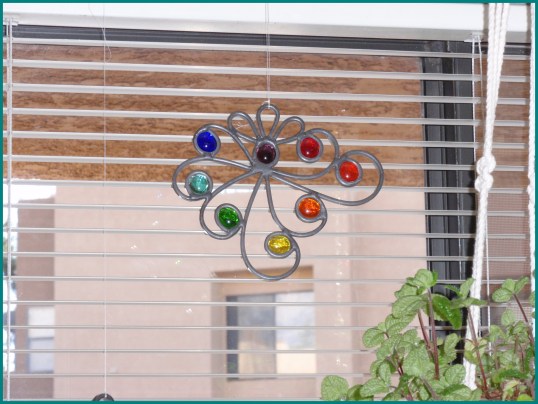
 Organizations that make a difference in the community deserve to be celebrated
Organizations that make a difference in the community deserve to be celebrated  I participated for a few years in this program that operates in three local schools, pairing adults with kindergarten students to give them 30 minutes of individual attention several days a week. According to the Albuquerque Reads website:
I participated for a few years in this program that operates in three local schools, pairing adults with kindergarten students to give them 30 minutes of individual attention several days a week. According to the Albuquerque Reads website:
 Animal Humane New Mexico accepts animals from other shelters around the state, and the staff and volunteers do a fantastic job in terms taking care of the animals’ health needs and in training and socializing them. Both the pets and the pet lovers of Albuquerque are fortunate to have Animal Humane New Mexico in the community.
Animal Humane New Mexico accepts animals from other shelters around the state, and the staff and volunteers do a fantastic job in terms taking care of the animals’ health needs and in training and socializing them. Both the pets and the pet lovers of Albuquerque are fortunate to have Animal Humane New Mexico in the community.





